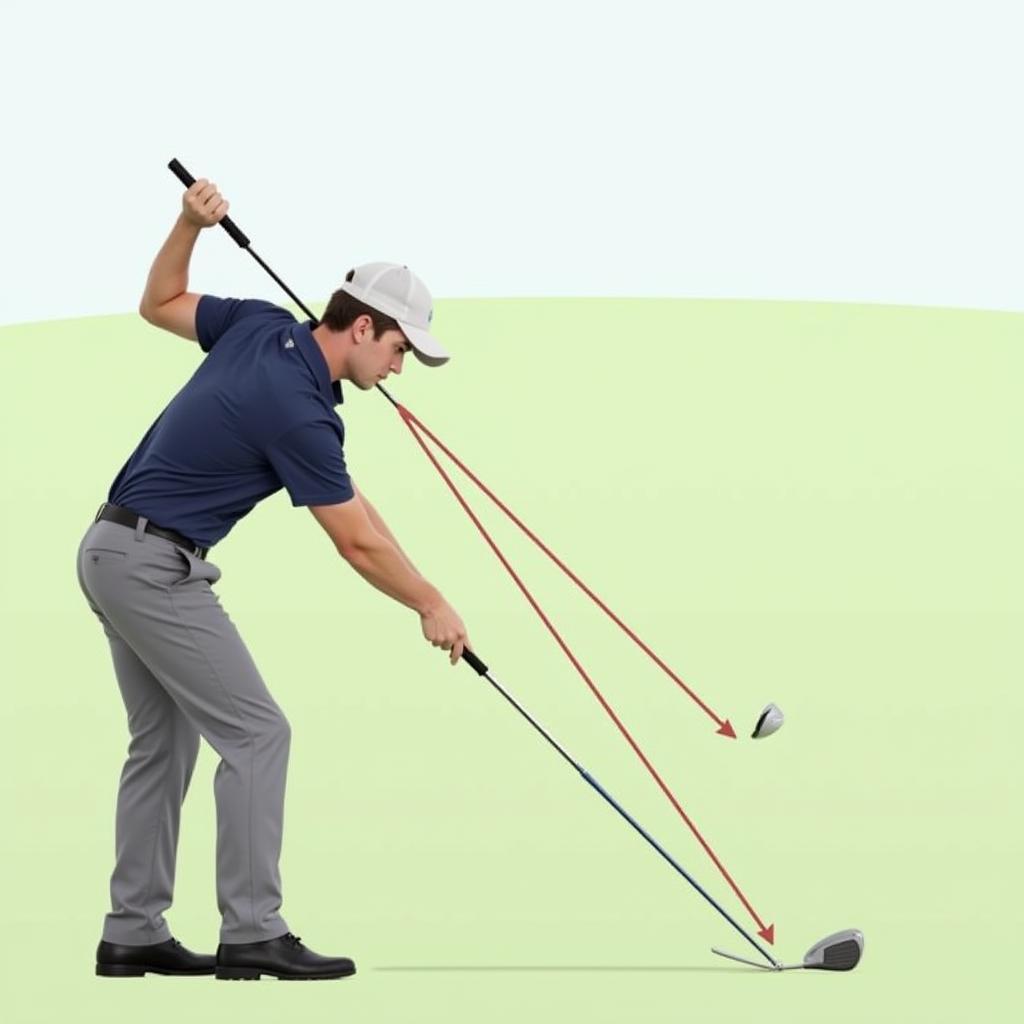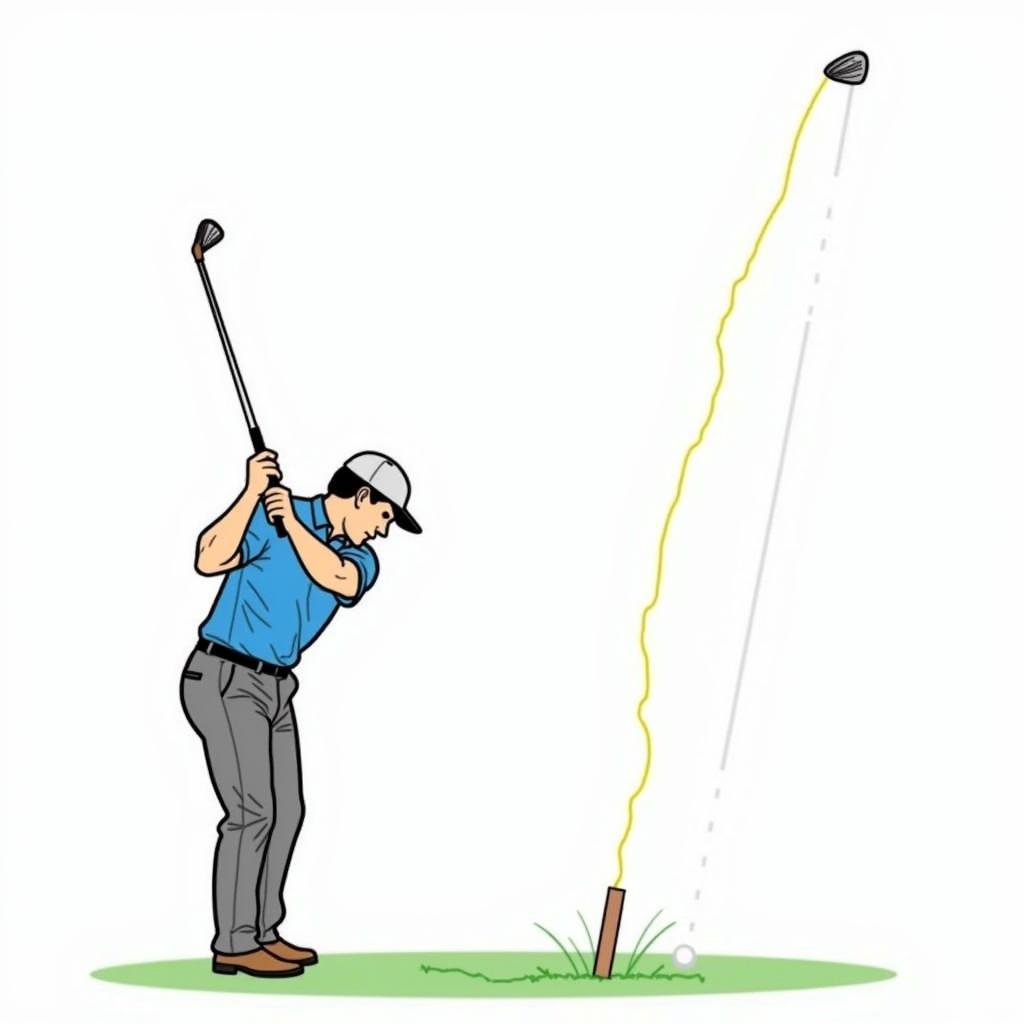Mastering the Different Golf Swing Types
October 15, 2024Golf, a game of precision and strategy, demands a well-honed swing. Understanding the nuances of different Golf Swing Types is crucial for players of all levels seeking to improve their game. This comprehensive guide delves into the intricacies of various golf swing styles, empowering you to make informed decisions on the course.
Exploring the Fundamentals: What are Golf Swing Types?
A golf swing is not a one-size-fits-all motion. It can be categorized into different “types” based on the path the clubhead takes relative to the target line during the swing. These variations, primarily driven by individual biomechanics and preferences, influence shot shape, distance, and consistency.
Deciphering the Most Common Golf Swing Types
While each swing is unique, understanding the most prevalent categories provides a framework for analyzing your own technique. Here’s a closer look at the three primary golf swing types:
1. The Draw
Favored for its controlled trajectory and increased distance, the draw swing path moves slightly inside-out in relation to the target line. This imparts a right-to-left spin on the ball (for right-handed golfers), resulting in a shot that curves gently towards the target.
 golfer demonstrating an inside-out swing path
golfer demonstrating an inside-out swing path
2. The Fade
Often considered a more controlled shot, the fade swing path travels slightly outside-in relative to the target line. This generates a left-to-right spin (for right-handed golfers), producing a shot that gently curves away from the target.
 illustration of an outside-in swing
illustration of an outside-in swing
3. The Straight Shot
The holy grail for many golfers, the straight shot demands a swing path that travels directly down the target line. Achieving this requires impeccable timing and consistency, as any deviation can result in a draw or fade.
 a golfer hitting a straight shot
a golfer hitting a straight shot
“Understanding your natural swing tendencies is the first step towards developing a consistent and repeatable swing,” says renowned golf coach, David Miller. “Once you identify your tendencies, you can work on shaping your shots and mastering the course.”
Factors Influencing Your Golf Swing Type
Several factors contribute to an individual’s natural swing type, including:
- Physical Build: Height, arm length, and flexibility influence swing plane and path.
- Grip: The way you hold the club impacts clubface position at impact.
- Stance and Posture: Alignment and body position play a crucial role in determining swing direction.
- Swing Mechanics: Tempo, wrist action, and weight transfer all influence the clubhead’s path.
Choosing the Right Golf Swing Type for You
There is no inherently “better” swing type; the key is to identify and develop the one that aligns best with your physique, swing mechanics, and desired shot shape. Experimentation and guidance from a qualified golf professional can help you find the swing that maximizes your potential.
Fine-tuning Your Swing: Tips and Techniques
- Video Analysis: Recording your swing provides valuable insights into your swing plane, path, and impact position.
- Alignment Aids: Utilizing alignment sticks and other visual cues helps groove a consistent swing path.
- Practice Drills: Targeted drills can help you correct swing flaws and ingrain proper mechanics.
- Professional Instruction: Seeking guidance from a qualified golf instructor can fast-track your progress and address specific swing issues.
Conclusion
Mastering the different golf swing types is an ongoing journey that requires dedication, practice, and a deep understanding of your own game. By identifying your natural tendencies and working towards a swing that complements your strengths, you can elevate your performance and unlock your true potential on the golf course.
FAQs
1. Can I change my natural golf swing type?
While challenging, it’s possible to refine your swing mechanics and alter your natural tendencies with dedicated practice and professional guidance.
2. What are the benefits of hitting a draw or a fade?
Draws often result in greater distance and a softer landing, while fades provide more control and predictability, especially in windy conditions.
3. How can I determine my current golf swing type?
Observing your typical shot shape and seeking feedback from a golf professional can help identify your current swing type.
4. What are some common swing flaws that lead to inconsistent shots?
Over-the-top swing, early extension, and improper weight transfer are common culprits behind inconsistent ball striking.
5. How often should I practice my golf swing?
Regular practice, even short sessions focusing on specific areas, is more effective than infrequent, marathon sessions.
6. What are some resources for finding a qualified golf instructor?
Local golf courses, online directories, and professional golf associations are excellent starting points for finding reputable instructors.
7. Can I improve my golf swing at home without professional help?
While professional guidance is invaluable, practicing drills, utilizing training aids, and analyzing your swing on video can contribute to noticeable improvements.
Need help with your golf game?
Contact us! We offer 24/7 customer support.
Phone Number: 0915117113
Email: [email protected]
Address: To 3 Kp Binh An, Phu Thuong, Viet Nam, Binh Phuoc 830000, Vietnam.